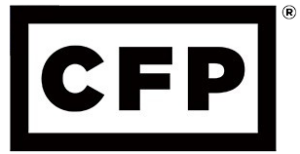As retirement approaches, many older adults consider downsizing their home as a way to simplify their lives, reduce expenses, and focus on what truly matters.
While the process can be emotionally and physically challenging, it can also be liberating and rewarding. To help you navigate this transition, we’ve compiled a comprehensive checklist for downsizing your home.
Reflect on Your Goals and Priorities
Before you begin the downsizing process, take some time to reflect on your goals and priorities.
- What do you want to achieve by moving to a smaller space?
- Are you looking to reduce expenses?
- Simplify your life?
- Be closer to family and friends?
Identifying your goals will help you stay focused and make better decisions throughout the process.
Assess Your new Living Space
Evaluate your new living space and determine how much room you’ll have for your belongings. Take measurements of each room and create a floor plan to help you visualize how your furniture and other items will fit. This will also help you decide what to keep and what to let go of.
Sort and Categorize Your Belongings
Begin the process of sorting through your possessions by categorizing them into four groups: keep, sell, donate, and discard. Be realistic about what you truly need and what can be replaced or repurposed in your new home. Remember, downsizing is about simplifying your life, so be selective about what you choose to keep.
Enlist Help From Family and Friends
Downsizing can be an overwhelming task, so don’t be afraid to ask for help. Enlist the assistance of family members, friends, or even professional organizers to help you sort through your belongings and make decisions about what to keep and what to let go. Know that there are services specifically dedicated to aiding in this process, and sometimes they agree for their services to be paid from house closing proceeds if you don’t have cash on hand to cover it at the time of service.
Sell, Donate, or Discard Unwanted Items
Once you’ve decided what items you no longer need, start the process of selling, donating, or discarding them. Hold a garage sale, list items for sale online (I’ve done very well listing on the Facebook Marketplace and eBay), or donate them to local charities. Be sure to dispose of any hazardous materials, such as paint or chemicals, according to local regulations. Your town waste website may have an easy search site to give guidance on proper recycling and waste removal procedure and locations.
Start Packing Early
Begin packing well in advance of your move to help reduce stress and make the process more manageable. Start with items you rarely use or seasonal belongings, and work your way through your home. Label boxes clearly with their contents and the room they belong in to make unpacking easier.
Notify Important Contacts of Your Move
Inform your bank, insurance company, healthcare providers, and other important contacts of your upcoming move and provide them with your new address. Don’t forget to update your address with the post office to ensure your mail is forwarded to your new home. If you send out an annual holiday card, be an early bird (who’s to say you can’t send out a Thanksgiving card?) and make note of the address change as an easy way to let friends and family know.
Hire a Reputable Moving Company
Research and hire a reputable moving company to help make your transition to a smaller home as smooth as possible. Be sure to get estimates from multiple companies and check their references before making a decision.
Unpack and Organize Your New Home
As you unpack and organize your new home, take the opportunity to create a space that supports your new, simplified lifestyle. Focus on functionality and comfort, and avoid the temptation to fill your new space with unnecessary items.
Embrace Your New, Downsized Life
Finally, remember that downsizing is not just about moving to a smaller space; it’s also about embracing a new phase of your life. Enjoy the freedom that comes with having fewer possessions and the opportunities that your simplified lifestyle affords you. And while this guide is focused on the move itself, remember to also make any required changes or considerations related to your car, medical insurance, taxes, and utilities if you’re changing states.
Remember, Planning Matters
Downsizing your home can be a challenging but ultimately rewarding experience for older adults approaching retirement.
By following this checklist and focusing on your goals and priorities, you can successfully navigate the process and begin enjoying your new, simplified life.





